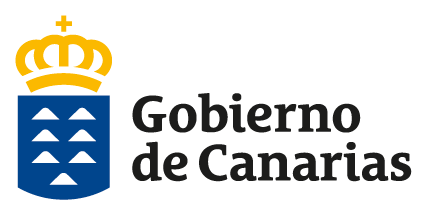Datos policiales e Inteligencia Artificial: Un equilibrio delicado entre la privacidad, la utilidad y la ética
DOI:
https://doi.org/10.36151/RCAP.ext.6Palabras clave:
Inteligencia Artificial (IA), privacidad, ética, ámbito policial, protección de datos personalesResumen
Este artículo aborda la intersección crítica entre la inteligencia artificial (IA), la privacidad y la ética en el ámbito policial. Explora cómo la IA ofrece oportunidades sin precedentes para mejorar la eficiencia en la recopilación y el procesamiento de datos en investigaciones criminales, pero también cómo plantea desafíos éticos y riesgos para la privacidad y la protección de datos. Desde dilemas éticos en la recopilación de datos y el uso de algoritmos de predicción delictiva hasta los riesgos asociados con la inferencia de datos y la creación de perfiles, el artículo examina las diversas facetas del tema. También se considera la tensión entre los enfoques deontológicos y utilitaristas en la ética de la privacidad, y se presentan métodos específicos para mitigar riesgos, como la anonimización, el consentimiento y notificación, la eliminación de datos y la privacidad diferencial. Finalmente, se ofrece un análisis multidimensional de los desafíos y planteamientos en este ámbito emergente.
Descargas
Referencias
Abadi, M., Chu, A., Goodfellow, I., McMahan, H. B., Mironov, I., Talwar, K., y Zhang, L. (2016). Deep Learning with Differential Privacy. In Proceedings of the 2016 ACM SIGSAC Conference on Computer and Communications Security.
Apple Inc. (2017). iOS Security Guide. https://www.apple.com/business/docs/iOS_Security_Guide.pdf
Babuta, A., Oswald, M., y Rinik, C. (2018). Machine learning algorithms and police decision-making: legal, ethical and regulatory challenges. Whitehall Report, núm. 3. Royal United Services Institute for Defense and Security Studies.
Bagdasaryan, E., Poursaeed, O., y Shmatikov, V. (2019). Differential Privacy Has Disparate Impact on Model Accuracy. In NeurIPS 2019: 33rd Conference on Neural Information Processing Systems. https://arxiv.org/pdf/1905.12101.pdf
Baquero Pérez, P.J. (2023). Cuestiones éticas sobre la implantación de la inteligencia artificial en la administración pública. Revista Canaria de Administración Pública, (1), 243–282.
Bok, S. (1983). Secrets: On the Ethics of Concealment and Revelation. Vintage Books.
Bos, J. W., Lauter, K., y Naehrig, M. (2014). Private predictive analysis on encrypted medical data. Journal of biomedical informatics, 50, 234-243.
Burrell, J. (2016). How the machine ‘thinks’: Understanding opacity in machine learning algorithms. Big data & society, 3(1).
Chen, M., Mao, S., y Liu, Y. (2014). Big data: A survey. Mobile Networks and Applications, 19(2), 171-209.
Chesney, R., y Citron, D. (2018). Deep Fakes: A Looming Challenge for Privacy, Democracy, and National Security. California Law Review, 107, 1753-1819.
Cohen, J. E. (2012). Configuring the Networked Self: Law, Code, and the Play of Everyday Practice. Yale University Press.
Cohen, J. E. (2019). Between Truth and Power: The Legal Constructions of Informational Capitalism. Oxford University Press.
Comisión Europea. (2016a). Reglamento (UE) 2016/679 del Parlamento Europeo y del Consejo de 27 de abril de 2016, relativo a la protección de las personas físicas en lo que respecta al tratamiento de datos personales y a la libre circulación de estos datos y por el que se deroga la Directiva 95/46/CE (Reglamento general de protección de datos).
Comisión Europea (2016b). Directiva (UE) 2016/680 del Parlamento Europeo y del Consejo de 27 de abril de 2016 relativa a la protección de las personas físicas en lo que respecta al tratamiento de datos personales por parte de las autoridades competentes para fines de prevención, investigación, detección o enjuiciamiento de infracciones penales o de ejecución de sanciones penales, y a la libre circulación de dichos datos y por la que se deroga la Decisión Marco 2008/977/JAI del Consejo
Crawford, K. (2016). Can an Algorithm Be Agonistic? Ten Scenes from Life in Calculated Publics. Science, Technology, y Human Values, 41(1), 77-92.
Dhar, V. (2013). Data science and prediction. Communications of the ACM, 56(12), 64-73.
Dwork, C., McSherry, F., Nissim, K., y Smith, A. (2006). Calibrating Noise to Sensitivity in Private Data Analysis. In Proceedings of the Third Theory of Cryptography Conference.
Dwork, C., y Roth, A. (2014). The Algorithmic Foundations of Differential Privacy. Foundations and Trends in Theoretical Computer Science, 9(3–4), 211–407.
Erlingsson, Ú., Pihur, V., y Korolova, A. (2014). RAPPOR: Randomized Aggregatable Privacy-Preserving Ordinal Response. In Proceedings of the 2014 ACM SIGSAC Conference on Computer and Communications Security.
España (2018). Ley Orgánica 3/2018, de 5 de diciembre, de Protección de Datos Personales y garantía de los derechos digitales. Boletín Oficial del Estado, número 294, de 6 de diciembre de 2018.
España (2021). Ley Orgánica 7/2021, de 26 de mayo, de protección de datos personales tratados para fines de prevención, detección, investigación y enjuiciamiento de infracciones penales y de ejecución de sanciones penales. Boletín Oficial del Estado, número 128, de 27 de mayo de 2021.
Ferguson, A. G. (2017). The rise of big data policing: surveillance, race, and the future of law enforcement. NYU Press.
Ferretti, L., Wymant, C., Kendall, M., Zhao, L., Nurtay, A., Abeler-Dörner, L., Parker, M., Bonsall, D. y Fraser, C. (2020). Quantifying SARS-CoV-2 transmission suggests epidemic control with digital contact tracing. science, 368(6491), eabb6936.
Fjeld, J., Achten, N., Hilligoss, H., Nagy, A., y Srikumar, M. (2020). Principled artificial intelligence: Mapping consensus in ethical and rights-based approaches to principles for AI. Berkman Klein Center Research Publication, (2020-1).
Floridi, L., Cowls, J., Beltrametti, M., Chatila, R., Chazerand, P., Dignum, V., Luetge, C., Robert Madelin, R., Pagallo, U., Rossi, F., Schafer; B., Valcke, P. y Vayena, E. (2018). AI4People—An Ethical Framework for a Good AI Society: Opportunities, Risks, Principles, and Recommendations. Minds and Machines, 28(4), 689-707.
Fussey, P., y Murray, D. (2019). Independent Report on the London Metropolitan Police Service's Trial of Live Facial Recognition Technology. University of Essex Human Rights Centre.
Gentry, C. (2009). A fully homomorphic encryption scheme. Stanford University. https://crypto.stanford.edu/craig/craig-thesis.pdf
Joh, E. E. (2017). Artificial intelligence and policing: First questions. Seattle UL Rev., 41, 1139.
Jordan, M. I., y Mitchell, T. M. (2015). Machine learning: Trends, perspectives, and prospects. Science, 349(6245), 255-260.
Konečný, J., McMahan, H. B., Yu, F. X., Richtárik, P., Suresh, A. T., y Bacon, D. (2016). Federated Learning: Strategies for Improving Communication Efficiency. arXiv preprint arXiv:1610.05492.
Kuner, C. (2017). The European Union General Data Protection Regulation (GDPR): European Regulation that has a Global Impact. International Data Privacy Law, 7(4), 277–289. (NO ENCONTRADO)
Levy, K., y Schneier, B. (2020). Privacy threats in intimate relationships. Journal of Cybersecurity, 6(1), tyaa006.
Lindell, Y. (2005). Secure multiparty computation for privacy preserving data mining. In Encyclopedia of Data Warehousing and Mining (pp. 1005-1009). IGI global.
Machanavajjhala, A., Kifer, D., Gehrke, J., y Venkitasubramaniam, M. (2007). l-diversity: Privacy beyond k-anonymity. ACM Transactions on Knowledge Discovery from Data (TKDD), 1(1), 3-es.
Mayer-Schönberger, V., y Cukier, K. (2013). Big Data: A revolution that will transform how we live, work, and think. Eamon Dolan/Houghton Mifflin Harcourt.
Mittelstadt, B., Allo, P., Taddeo, M., Wachter, S., y Floridi, L. (2016). The ethics of algorithms: Mapping the debate. Big Data y Society.
Narayanan, A., y Shmatikov, V. (2010). De-anonymizing social networks. In 2009 30th IEEE Symposium on Security and Privacy (pp. 173-187). IEEE.
Nissenbaum, H. (2009). Privacy in context: Technology, policy, and the integrity of social life. Stanford University Press.
Obar, J. A., y Oeldorf-Hirsch, A. (2018). The biggest lie on the Internet: Ignoring the privacy policies and terms of service policies of social networking services. Information, Communication y Society, 23(1), 128-147.
Pasquale, F. (2015). The black box society: The secret algorithms that control money and information. Harvard University Press.
Richards, N. M., y King, J. H. (2014). Big Data Ethics. Wake Forest Law Review, 49, 393–432.
Roman, R., Zhou, J., y Lopez, J. (2013). On the features and challenges of security and privacy in distributed internet of things. Computer Networks, 57(10), 2266-2279.
Sicari, S., Rizzardi, A., Grieco, L. A., y Coen-Porisini, A. (2015). Security, privacy and trust in Internet of Things: The road ahead. Computer Networks, 76, 146-164.
Solove, D.J. (2002). Conceptualizing Privacy. California Law Review, 90(4), 1087-1155.
Solove, D. J. (2008). Understanding Privacy. Harvard University Press.
Solove, D. J. (2013). Privacy self-management and the consent dilemma. Harvard Law Review, 126, 1880.
Sweeney, L. (2002). k-anonymity: A model for protecting privacy. International Journal on Uncertainty, Fuzziness and Knowledge-based Systems, 10(05), 557-570.
Tene, O., y Polonetsky, J. (2012). Big data for all: Privacy and user control in the age of analytics. Nw. J. Tech. y Intell. Prop., 11, 239.
Thompson, A., Stringfellow, L., Maclean, M., y Nazzal, A. (2021). Ethical considerations and challenges for using digital ethnography to research vulnerable populations. Journal of Business Research, 124, 676-683.
Yang, Q., Liu, Y., Chen, T., y Tong, Y. (2019). Federated machine learning: Concept and applications. ACM Transactions on Intelligent Systems and Technology (TIST), 10(2), 1-19. https://doi.org/10.1145/3284422
Ziegeldorf, J. H., Morchon, O. G., y Wehrle, K. (2014). Privacy in the Internet of Things: threats and challenges. Security and Communication Networks, 7(12), 2728-2742.
Zuboff, S. (2019). The Age of Surveillance Capitalism: The fight for a human future at the new frontier of power. PublicAffairs.
Publicado
Número
Sección
Licencia
Derechos de autor 2023 Revista Canaria de Administración Pública

Esta obra está bajo una licencia internacional Creative Commons Atribución-NoComercial-SinDerivadas 4.0.







